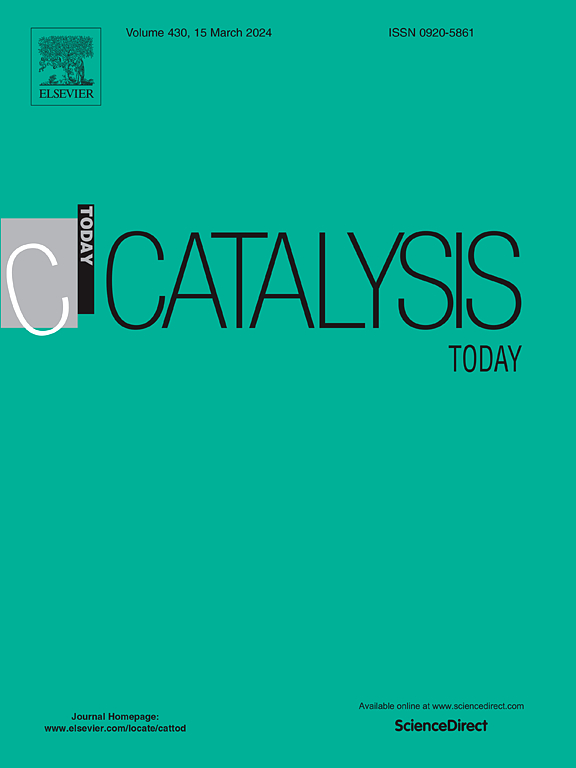Influence of operating conditions on the kinetics of Iron-catalysed gasification of biocarbons with CO2
IF 5.2
2区 化学
Q1 CHEMISTRY, APPLIED
引用次数: 0
Abstract
In this study, we investigated the catalytic gasification of cellulose-derived biocarbons (CDC) with CO₂ using Fe as the catalyst. Fe(%wt)/CDC samples were synthesized through controlled pyrolysis of cellulose impregnated with iron precursors and evaluated under varying reaction temperatures and CO₂ concentrations. Characterization by XRD, TGA, Raman, TEM, and N₂ adsorption revealed that the initial Fe loading in cellulose not only determines the final carbon content in each Fe(%wt)/CDC sample but also plays a crucial role in regulating the textural and structural properties of the resulting carbonaceous materials, as well as the Fe nanoparticle size distribution. Specifically, higher Fe loading led to a decrease in surface area, reduction of microporosity, an increase of pore diameter, and to larger average Fe nanoparticle sizes. During gasification, Fe nanoparticles were oxidized by CO₂, resulting in a decline in catalytic activity and ultimately limiting the complete gasification of the carbonaceous material by the end of the reaction. These opposing effects explain the varying behaviour observed in the Fe(%wt)/CDC samples studied. Analysis of the initial gasification rates indicated that both, the apparent reaction order with respect to CO₂ and the activation energy, increased with reaction temperature and CO₂ partial pressure (pCO₂), respectively. These results were successfully interpreted using a Langmuir-Hinshelwood model, which accounts for the influence of CO₂ adsorption on the observed reaction rate. These findings underscore the potential of Fe(%wt)/CDC materials for CO₂ utilization and biomass valorisation, providing valuable insights for the development of efficient catalytic gasification processes.
求助全文
约1分钟内获得全文
求助全文
来源期刊

Catalysis Today
化学-工程:化工
CiteScore
11.50
自引率
3.80%
发文量
573
审稿时长
2.9 months
期刊介绍:
Catalysis Today focuses on the rapid publication of original invited papers devoted to currently important topics in catalysis and related subjects. The journal only publishes special issues (Proposing a Catalysis Today Special Issue), each of which is supervised by Guest Editors who recruit individual papers and oversee the peer review process. Catalysis Today offers researchers in the field of catalysis in-depth overviews of topical issues.
Both fundamental and applied aspects of catalysis are covered. Subjects such as catalysis of immobilized organometallic and biocatalytic systems are welcome. Subjects related to catalysis such as experimental techniques, adsorption, process technology, synthesis, in situ characterization, computational, theoretical modeling, imaging and others are included if there is a clear relationship to catalysis.
 求助内容:
求助内容: 应助结果提醒方式:
应助结果提醒方式:


